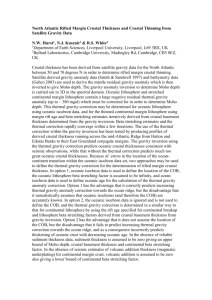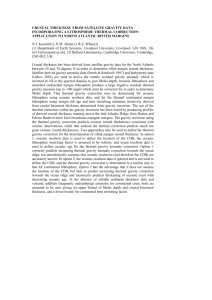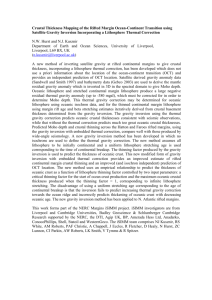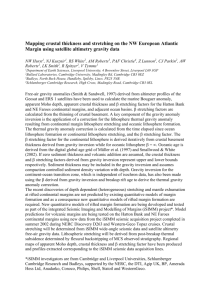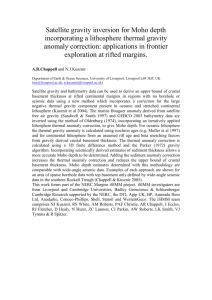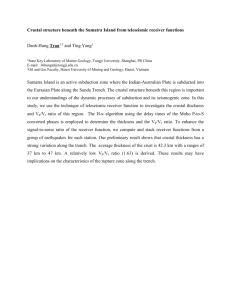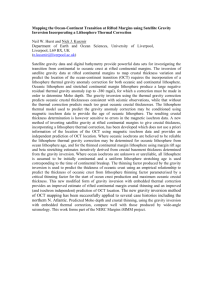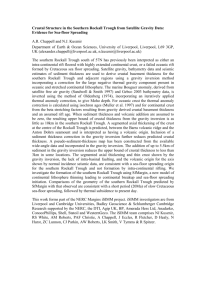CGU_AGU_SEG_2004_Abs_Grav_GrandBanks
advertisement
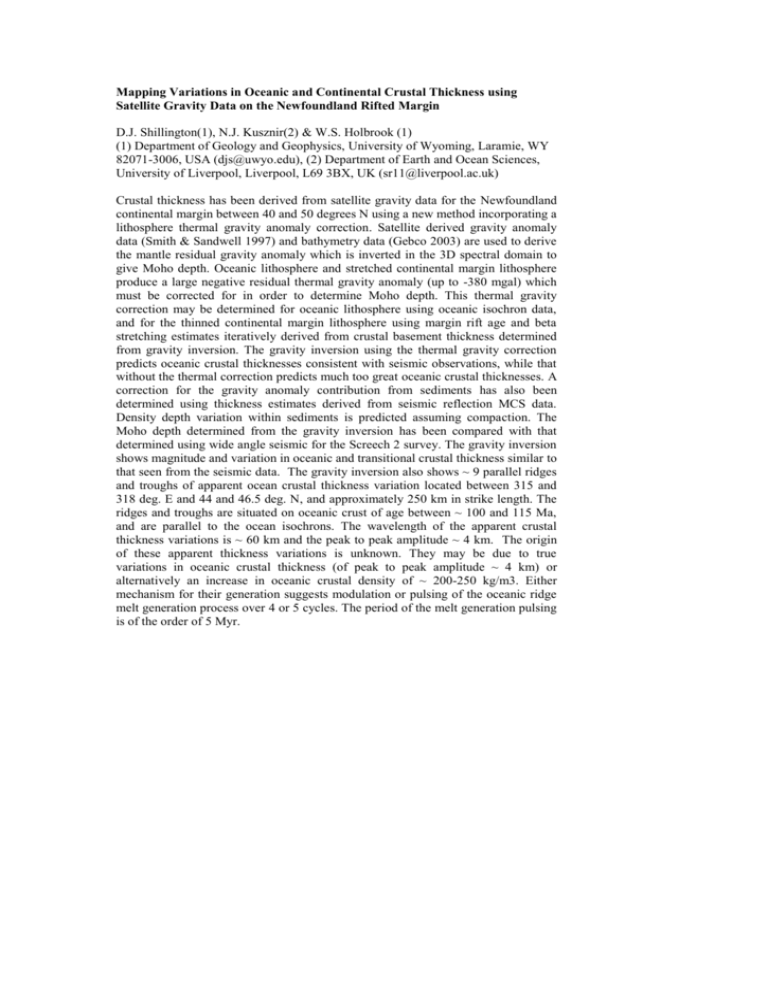
Mapping Variations in Oceanic and Continental Crustal Thickness using Satellite Gravity Data on the Newfoundland Rifted Margin D.J. Shillington(1), N.J. Kusznir(2) & W.S. Holbrook (1) (1) Department of Geology and Geophysics, University of Wyoming, Laramie, WY 82071-3006, USA (djs@uwyo.edu), (2) Department of Earth and Ocean Sciences, University of Liverpool, Liverpool, L69 3BX, UK (sr11@liverpool.ac.uk) Crustal thickness has been derived from satellite gravity data for the Newfoundland continental margin between 40 and 50 degrees N using a new method incorporating a lithosphere thermal gravity anomaly correction. Satellite derived gravity anomaly data (Smith & Sandwell 1997) and bathymetry data (Gebco 2003) are used to derive the mantle residual gravity anomaly which is inverted in the 3D spectral domain to give Moho depth. Oceanic lithosphere and stretched continental margin lithosphere produce a large negative residual thermal gravity anomaly (up to -380 mgal) which must be corrected for in order to determine Moho depth. This thermal gravity correction may be determined for oceanic lithosphere using oceanic isochron data, and for the thinned continental margin lithosphere using margin rift age and beta stretching estimates iteratively derived from crustal basement thickness determined from gravity inversion. The gravity inversion using the thermal gravity correction predicts oceanic crustal thicknesses consistent with seismic observations, while that without the thermal correction predicts much too great oceanic crustal thicknesses. A correction for the gravity anomaly contribution from sediments has also been determined using thickness estimates derived from seismic reflection MCS data. Density depth variation within sediments is predicted assuming compaction. The Moho depth determined from the gravity inversion has been compared with that determined using wide angle seismic for the Screech 2 survey. The gravity inversion shows magnitude and variation in oceanic and transitional crustal thickness similar to that seen from the seismic data. The gravity inversion also shows ~ 9 parallel ridges and troughs of apparent ocean crustal thickness variation located between 315 and 318 deg. E and 44 and 46.5 deg. N, and approximately 250 km in strike length. The ridges and troughs are situated on oceanic crust of age between ~ 100 and 115 Ma, and are parallel to the ocean isochrons. The wavelength of the apparent crustal thickness variations is ~ 60 km and the peak to peak amplitude ~ 4 km. The origin of these apparent thickness variations is unknown. They may be due to true variations in oceanic crustal thickness (of peak to peak amplitude ~ 4 km) or alternatively an increase in oceanic crustal density of ~ 200-250 kg/m3. Either mechanism for their generation suggests modulation or pulsing of the oceanic ridge melt generation process over 4 or 5 cycles. The period of the melt generation pulsing is of the order of 5 Myr.
